
Are your students citing “text evidence” without really having control of the meaning of that evidence? Do they forget to explain further or elaborate? If either of these is the case for your students, they may need to space to contemplate what one detail or quote from the text means. A simple way to do this is to introduce the strategy Explode to Explain. What follows is a description of the first Explode to Explain three-phase lesson I taught and what I’ve learned since.
Phase 1 Meet the Source
For the first small group lesson (20 minutes), I introduced a NEWSELA article about the eco-boats that were hired to clean garbage from the Rio Bay in preparation for the Olympics. My introduction included defining and discussing the difference between garbage and sewage (important to understanding the article) and previewing to making informed predictions about the content of the article. Then the students read the article and I conferred with individuals. Afterwards we brainstormed and discussed main ideas in the text.
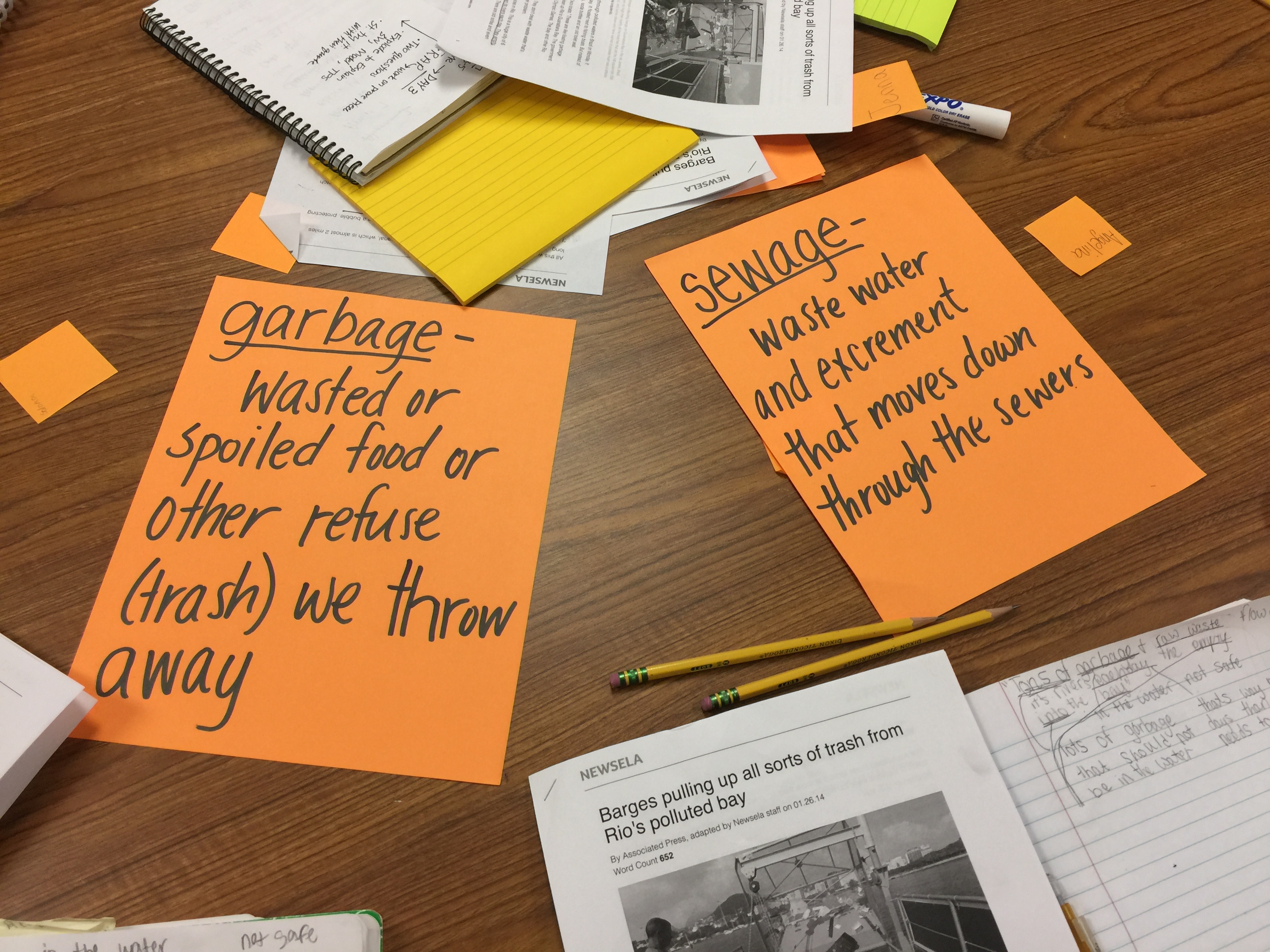
Phase 2 Meet “Explode to Explain”
To begin the follow-up phase 2 lesson, we talked about about one of the main ideas – “Water pollution is a problem in the Rio Bay” – written in purple ink in image below. (Remember – this is just one of the main ideas in this article.) I shared a supporting quote from the article with them – written in blue ink on chart- and we worked our way through the details in that particular quote. In the image below, notice how I jotted what the students were thinking in red ink.
I modeled talking about what this quote means using the notes in red to help me explain my thinking. Then I asked a student to do the same. THEN I asked partners to turn and talk to do the same. My goal was for them to speak fluently about what they understand this quote to mean–and then be able to write about it.
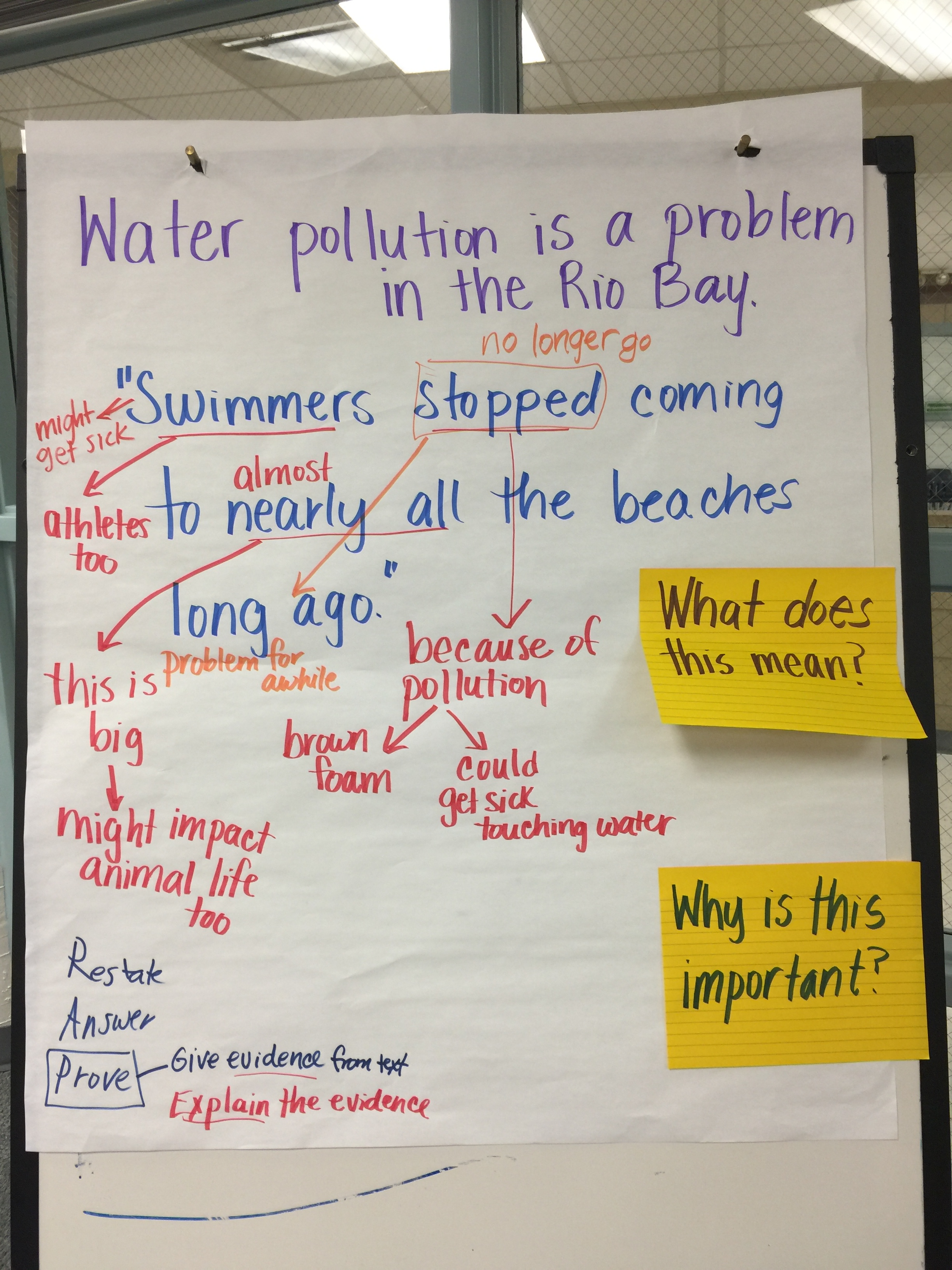
I closed this lesson by asking the students to explode an additional quote from the text that supports the main idea – “Tons of garbage and raw waste flow down rivers each day.” They wrote this quote in their response journals and attempted to explode. I conferred heavily. They will continue to need support doing this for awhile.
Phase 3 Meet the Response
For a day 3 lesson, we reviewed the notes on the quote we’d exploded together and engaged in a shared writing to explain that quote. (See the image below.) Then they returned to the quote they’d exploded on their own, orally rehearsed with a partner what they planned to write and then wrote.
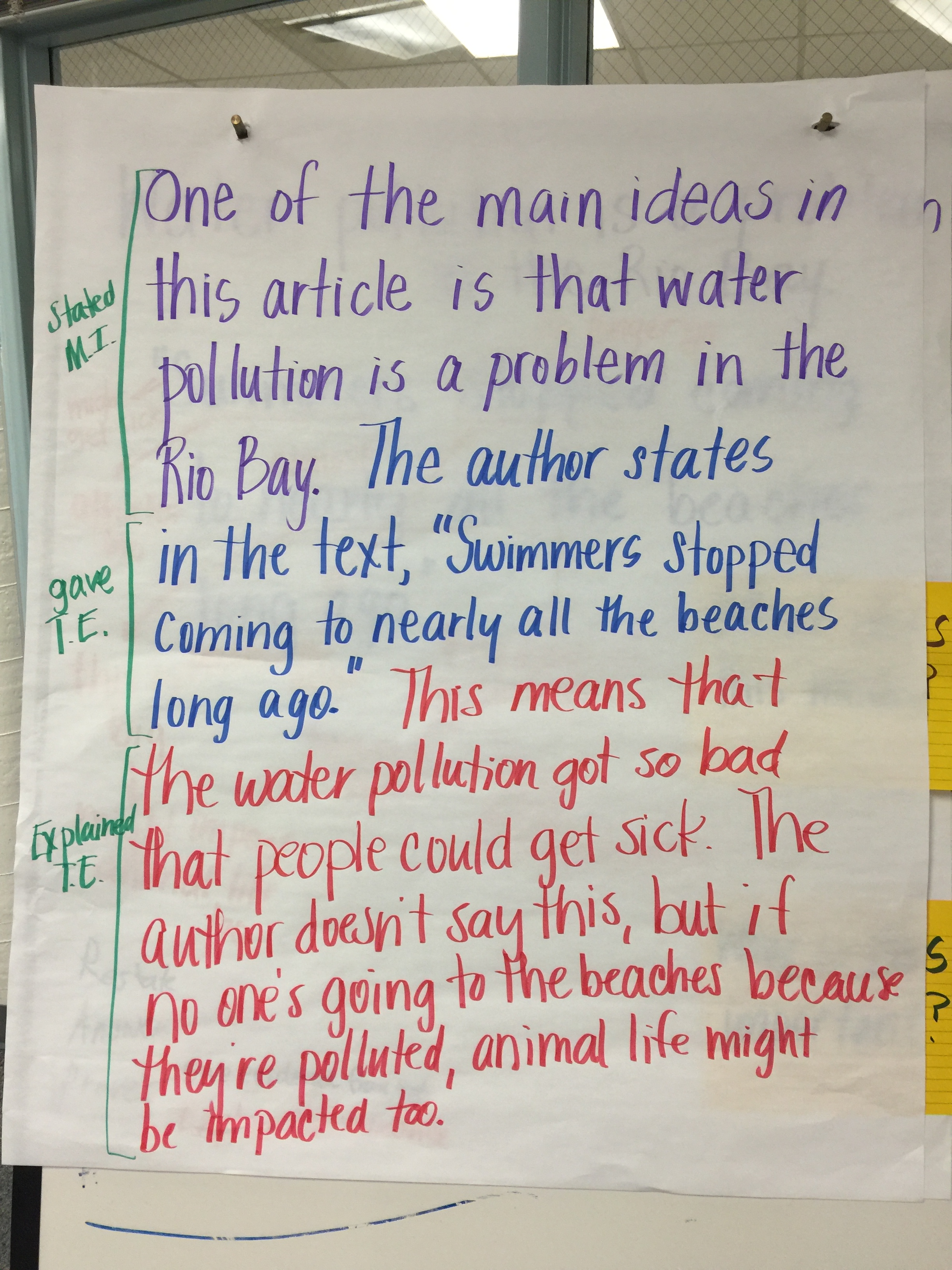
After these lessons, the students were just beginning to get what we were talking about as far as explaining. They will need to do this a LOT to get a grip on explaining the text evidence they are citing.
What I’ve learned in the years since we taught this lesson
In the years since a group of colleagues and I developed this idea, we’ve started being clearer with students about why this strategy is helpful – increased comprehension, increased content knowledge, and being able to speak and write more fluently (and knowledgeably) about what they’ve read. We’ve also started using an anchor chart to make clear how students explode to explain. Here’s a link to a Google slide like the one below.
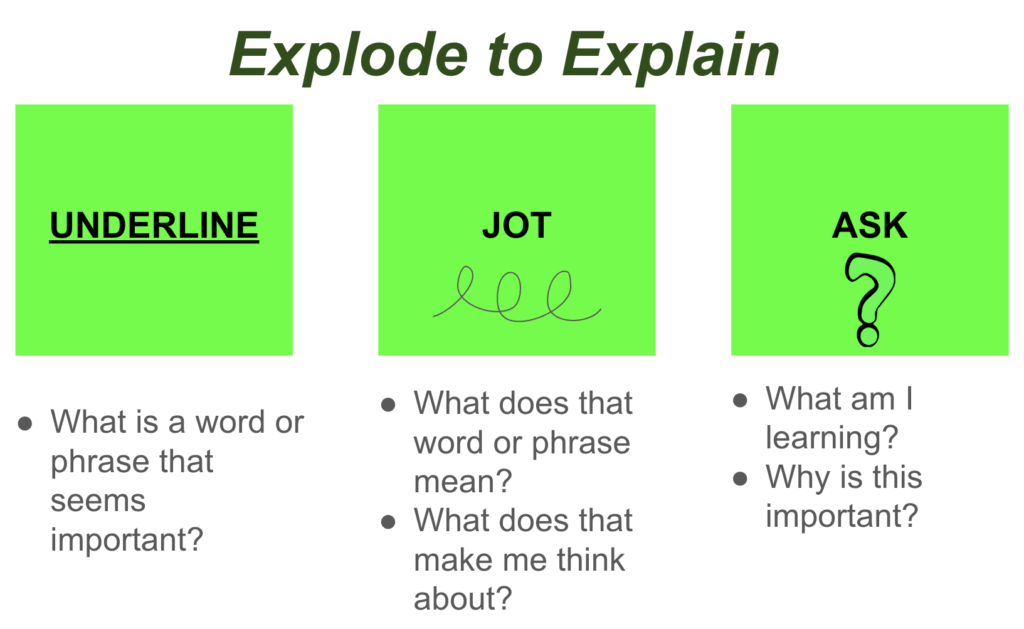
I’ve also created a one-pager (see below) to support you as you plan and implement explode to explain lessons over time – moving students towards choosing and annotating their own important sentences.
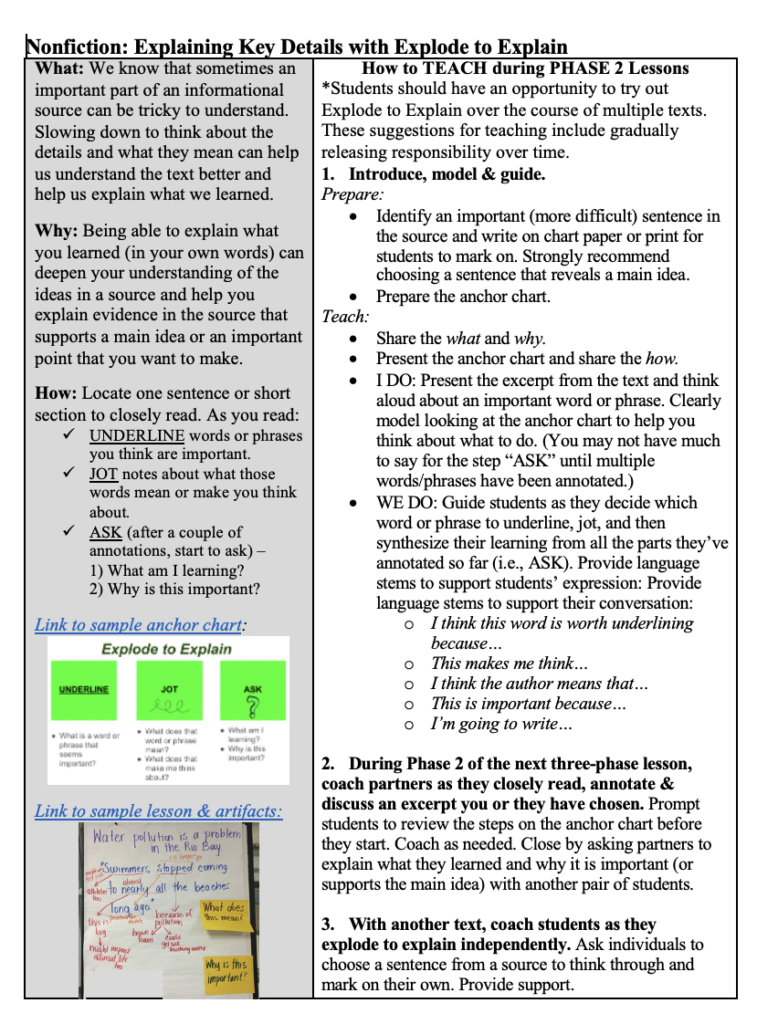
A big thanks to the 3-5th grade teachers in the NKC School District who collaborated with me on this lesson (so many years ago now) and to RENEE for being my think partner!!!
Hope this helps.
S
Revised Winter 2024
